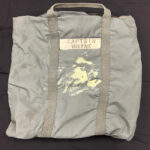The familiar pixelated pattern of the Universal Camouflage Pattern, widely recognized as the Army Combat Uniform (ACU) pattern, has officially been retired by the United States Army as of October 1, 2019. For years, the ACU was the standard-issue combat uniform, but the Army has transitioned to the Operational Camouflage Pattern (OCP), also known as the “Scorpion” pattern. This shift marks a significant change in the appearance of the American soldier and is considered by many within the ranks as a practical and visual improvement.
The move away from the ACU pattern, often referred to as digital camouflage due to its pixelated design, began in 2014. Soldiers have generally received the OCP with enthusiasm, citing its enhanced functionality compared to its predecessor. Command Sgt. Maj. Dennis Law of the U.S. Army Reserve 412th Theater Engineer Command stated, “With the OCP, we’ve been able to improve upon the functionality of the ACU and carry that forward into a uniform that has already gained more functionality and more popularity than the ACU ever had.” He further emphasized that “the end of the ACU era means we’re creating a better uniformity across the force, with the OCP offering better performance at blending in, and I think it makes our Soldiers look more like warriors.” This sentiment reflects a widespread belief that the OCP provides better concealment and a more professional appearance.
 U.S. Army Reserve Soldiers in ACU during a deployment ceremony, marking the pattern's widespread use before its retirement.
U.S. Army Reserve Soldiers in ACU during a deployment ceremony, marking the pattern's widespread use before its retirement.
The decision to replace the Acu Army Combat Uniform was not taken lightly. Concerns about the effectiveness of the ACU pattern surfaced in the early 2000s, eventually reaching Congress. Lawmakers responded to these concerns, and in 2009, House Resolution 2346 mandated the Department of Defense to expedite the provision of combat uniforms with camouflage patterns better suited to the Afghan environment for deployed personnel. This congressional action underscored the urgency to improve soldier camouflage in operational theaters.
Extensive testing and evaluation processes, including computer simulations and field trials across diverse global locations, were conducted to identify a superior camouflage solution. Ultimately, the “Scorpion” pattern, which moved away from the digital design of the ACU in favor of a more nature-inspired, organic pattern incorporating colors and shapes commonly found in natural environments, was selected as the most effective.
 U.S. Army Reserve soldiers in ACU during training, showcasing the uniform in a field environment.
U.S. Army Reserve soldiers in ACU during training, showcasing the uniform in a field environment.
While the OCP is now the standard, some logistical challenges remain. First Sgt. Kimberly Jones from the Command’s Headquarters and Headquarters Company pointed out the need for complete uniformity, stating, “I think uniformity is important, so we should turn in the ACU gear and receive the OCP pattern.” Jones also noted the perceived durability of the OCP uniform material, mentioning, “The material is heavier, so it lasts longer before it starts to fade.”
Beyond the standard OCP uniform, the Army is also innovating with specialized variants like the Improved Hot Weather Combat Uniform (IHWCU), rolled out in locations such as Hawaii and Fort Benning, Georgia, in July 2019. The IHWCU, utilizing the OCP color scheme, is constructed from a quick-drying nylon/cotton blend to enhance comfort in hot climates. Soldiers could find these in military clothing stores starting in February 2020. Looking further ahead, the Army is exploring advanced uniform technologies, including materials designed to provide concealment from ground-based radar and fabrics with special coatings to offer warmth without excessive layering. These ongoing developments signal a continued commitment to enhancing soldier performance and protection through uniform innovation.


